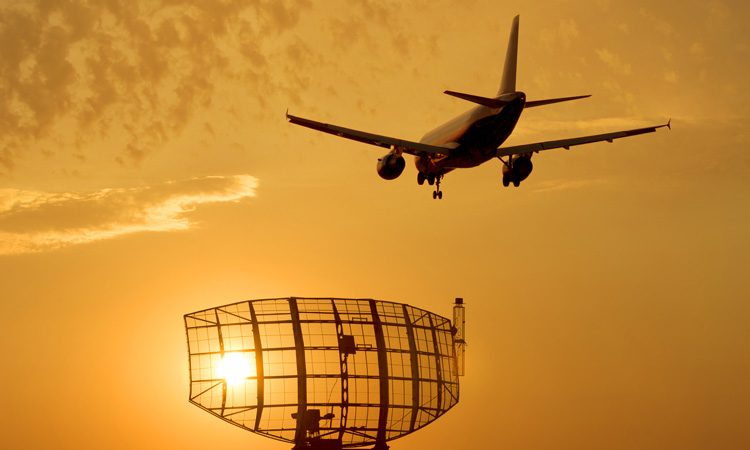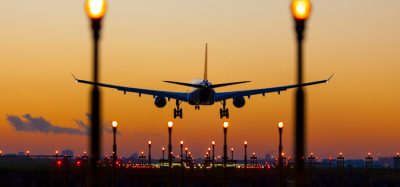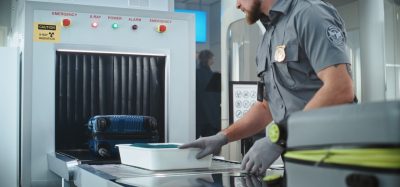Aviation’s best kept secret: Have you heard of aerodrome safeguarding?
Posted: 21 August 2019 | Amanda Purdye, Simon Vince | No comments yet
One of the best kept secrets in the aviation industry is aerodrome safeguarding. Few are aware of the professionals playing a vital part in keeping aircraft and passengers safe. Amanda Purdye and Simon Vince, co‑Chairs of AOA’s Aerodrome Safeguarders Group, shed some light on the responsibilities of a safeguarder.


For the uninitiated, safeguarding of aerodromes is the process used to ensure the safety of aircraft while taking off and landing or flying in the vicinity of aerodromes. ICAO and EASA regulations set out the requirement for aerodrome safeguarding.
Within the UK this process is enshrined in the Town and Country Planning Act through planning circulars. While all aerodromes are recommended to establish consultation procedures with the local planning authority (LPA), some aerodromes are officially safeguarded on the basis of their importance to the national air transport system, meaning safeguarding at those airports is a legal requirement. Within the UK, the implementation of this is overseen by the CAA.
Join our free webinar: Revolutionising India’s travel experience through the Digi Yatra biometric programme.
Air travel is booming, and airports worldwide need to move passengers faster and more efficiently. Join the Digi Yatra Foundation and IDEMIA to discover how this groundbreaking initiative has already enabled over 60 million seamless domestic journeys using biometric identity management.
Date: 16 Dec | Time: 09:00 GMT
rEGISTER NOW TO SECURE YOUR SPOT
Can’t attend live? No worries – register to receive the recording post-event.
Officially safeguarded aerodromes are required to lodge a consultation map with the LPAs in their safeguarding zones. Typically, this extends to a radius of 15km from the aerodromes or 30km for wind turbines. The LPA must consult the aerodrome about certain planning applications which fall within safeguarding zones so they can assess whether the proposed development would impact flight safety.
Aerodrome safeguarding assessments
What then, does a safeguarding officer look out for when, for example, they are consulted about a planning application? Aerodrome safeguarding assessments cover a significant number of issues:
Obstacle limitation surfaces (OLS)
These ensure that the airspace around an aerodrome is free from buildings or structures that have the potential to cause danger to aircraft either in the air or on the ground.
The OLS completely surround the aerodrome and typically extend out to a radius of 15km from the Aerodrome Reference Point (ARP). Each OLS will have a height restriction attached to it and no development should infringe upon that height. The restrictions will vary between airports, depending on their aerodrome reference code and approach procedures in place.
Communications, navigation and surveillance
Safeguarding radar, radio and navigation infrastructure is critical as these systems can be degraded through development, construction and other activities. The systems can have their coverage area affected by buildings or other development, blocking the signal path causing a loss of cover in the specific areas that they are intended to reach. There can also be degradation or corruption of signals which aircraft rely on.
Radar and navigational aids are particularly vulnerable to signal reflections from buildings, in the case of radar these can cause false aircraft to appear on ATC screens.
Depending on the issue, it is possible to design buildings to mitigate impact on navigational aids. An example of this is Heathrow Airport’s corporate HQ, the Compass Centre.
Instrument flight procedures
IFPs are a set of predetermined approach and departure flight paths designed to achieve and maintain an acceptable level of safety, including clearance from obstacles. Their safeguarded surfaces must not be infringed upon as safety margins or airspace capacity could potentially be reduced. There could also be an impact on future airport and airspace development due to infringing obstacles.
Lighting
At night and during periods of poor visibility, pilots rely on the pattern of aeronautical ground lights principally, the approach and runway lights, to assist in aligning themselves with the runway and the correct landing point. The lights need to be clearly visible at all times, there should be no other lighting in the vicinity that could confuse pilots or aircrew. There must be no risk of glare or lighting that could distract pilots or air traffic controllers.
Wildlife hazard risk
This is perhaps one of the more well-known risks to aviation. Species such as deer, badgers and foxes could access the airfield and stray into the path of landing and departing aircraft. It is estimated that damage to aircraft and flight delays resulting from wildlife strikes around the world costs more than €1 billion a year.
Examples of proposals that have the potential to attract birds hazardous to aviation are areas of open water, large areas of flat/shallow pitched roofs, large landscaping schemes, ground works, buildings and structures with ledges and perching opportunities, generation and storage of putrescible waste. Many aerodromes have their own biodiversity programmes, so it is possible for nature and airports to live side by side, as long as it is carefully designed and managed.
Construction processes
Cranes have the potential to infringe the protected surfaces around the aerodrome and can impact on radar and other navigational aids by their height and moving parts. Therefore, crane operators are required to obtain a crane permit from the aerodrome operator, typically within a six-kilometre radius of the aerodrome, to enable assessments to take place to ensure there will be no impact on safe aerodrome operations.
It doesn’t end with cranes, other construction considerations could include dust and smoke as this can reduce visibility, temporary lighting which can cause glare or confusion to pilots and air traffic control, and soil disturbance which can provide a valuable food source for birds.
Renewable energy
Aerodrome safeguarding officers will work closely with renewable energy companies to ensure these important projects do not impact on safe aerodrome operations. Wind turbines have the potential to infringe the protected surfaces around the aerodrome and their rotating blades can impact radar, causing ‘clutter’ on radar screens.
Solar installations have the potential to deflect radar and can cause glint and glare issues for pilots and ATC.
Induced turbulence
Significant developments on or in close proximity to the aerodrome will need to be modelled to ensure that they will not cause any issues for aircraft taking off or landing at the aerodrome by way of building induced turbulence or wind shear.
Developments such as cooling towers can produce plumes of hot air that can create air turbulence which can affect the manoeuvrability of aircraft.
Public safety zones (PSZs)
PSZs are areas of land at the end of the busiest aerodromes’ runways where development is restricted in order to control the number of people living and working that could be at risk of death or injury in the event of an aircraft accident.
On all these issues, aerodrome safeguarders continuously work with LPAs, developers and others. They work with LPAs when local planning policy is developed, with developers and others before a planning application is submitted, and during the process to help ensure schemes fulfil the aims of the developers while not impacting aviation.
This can create challenges with constant pressure from development in the vicinity of aerodromes, which is why aerodrome safeguarders work closely with the AOA, CAA and the Department for Transport to ensure that aerodrome safeguarding is taken into consideration with regard to national policy. This has not always been easy, and in the past safeguarding has been overlooked. For example, permitted development rights were amended to allow telecoms operators to extend the height of telecoms masts without planning permission. This has caused issues for some airports as these taller masts impacted on CNS equipment or became a physical obstacle.
In the past it could be a lonely life being an aerodrome safeguarder as often you may only find one safeguarder at an airport and few opportunities to share experiences. With this in mind we set up an aerodrome safeguarders group in 2014 to share ideas and learning and to support one another.
The first of our six-monthly safeguarding seminars was held at Gatwick Airport in November 2014, and we have organised three sold-out aerodrome safeguarding training courses. The group joined forces with the AOA in 2016 to enhance its reach to UK airports and raise the profile of this important function, which we will continue to do so moving forward.
Biography




Stay Connected with International Airport Review — Subscribe for Free!
Get exclusive access to the latest airport and aviation industry insights from International Airport Review — tailored to your interests.
✅ Expert-Led Webinars – Gain insights from global aviation leaders
✅ Weekly News & Reports – Airport innovation, thought leadership, and industry trends
✅ Exclusive Industry Insights – Discover cutting-edge technologies shaping the future of air travel
✅ International Airport Summit – Join our flagship event to network with industry leaders and explore the latest advancements
Choose the updates that matter most to you.
Sign up now to stay informed, inspired, and connected — all for free!
Thank you for being part of our aviation community. Let’s keep shaping the future of airports together!
Related topics
Air traffic control/management (ATC/ATM), Regulation and Legislation, Safety

















